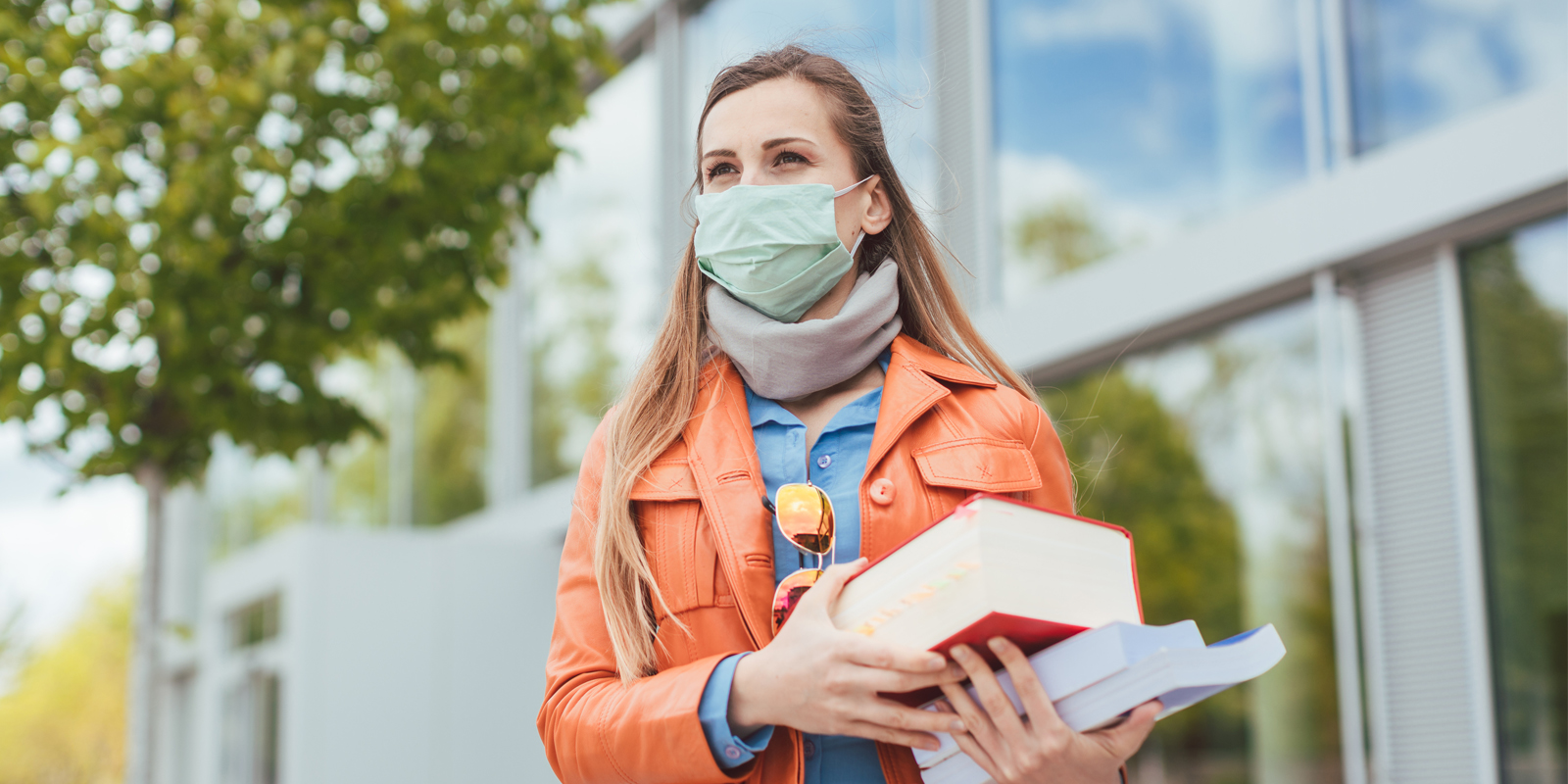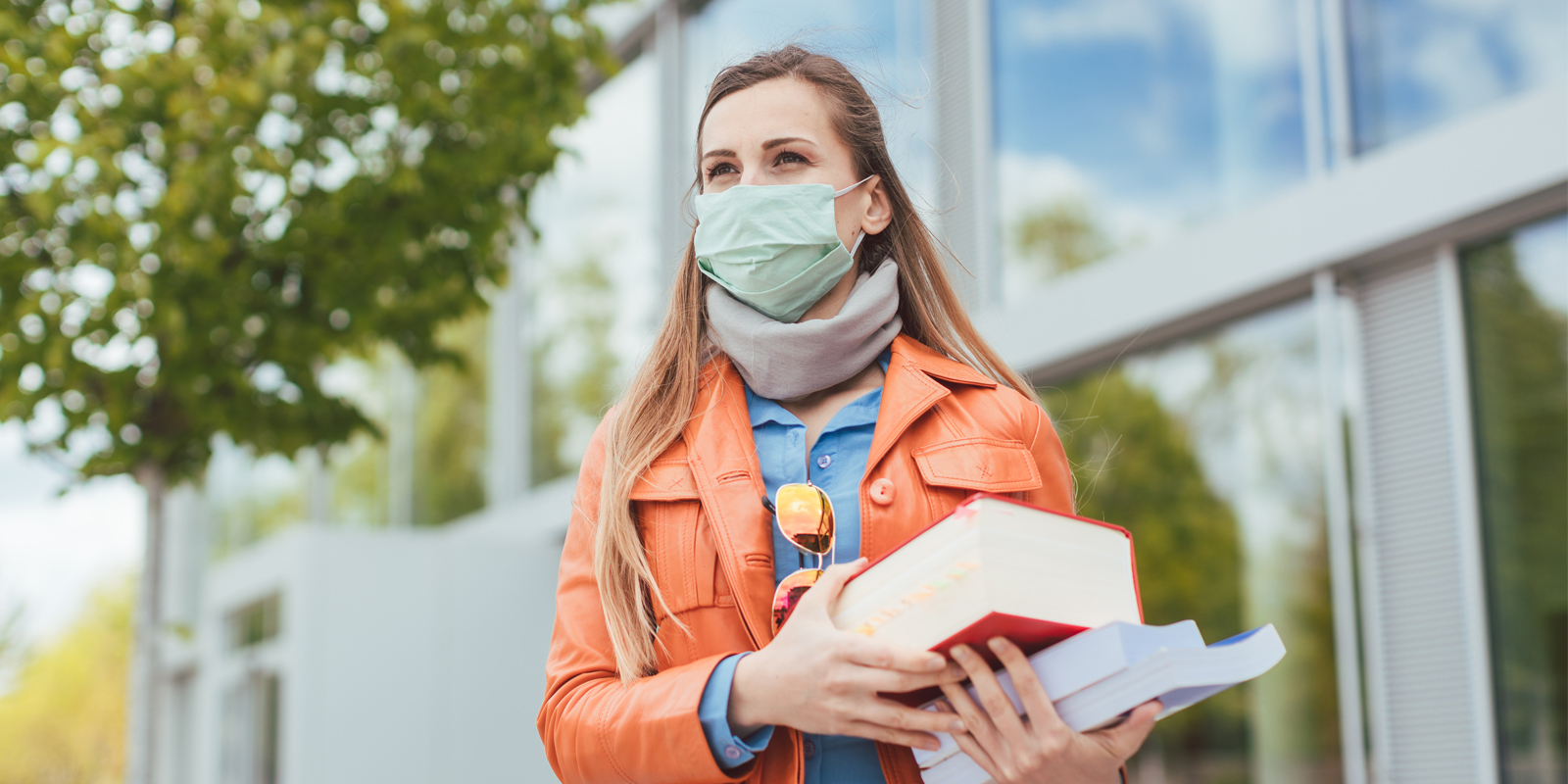

Colleges across the United States returned to campus in the fall of 2020 after a spring semester of remote learning and a summer break. Campuses quickly developed and adopted numerous strategies for frequent COVID-19 testing and data reporting in order to ensure the safety of students, faculty, staff members, and the neighboring community.
A new report from the National Academies of Sciences, Engineering and Medicine has assessed these strategies and provided 10 important takeaways for COVID-19 testing at colleges. While these lessons apply to the current crisis that many organizations face, they also should provide insight into future business continuity planning efforts.
1. Testing is one component of a larger mitigation strategy.
Comprehensive and coherent plans that provide a range of redundancies are necessary to reduce COVID-19’s spread. In addition to widespread diagnostic testing, encourage protective behaviors such as mask wearing, handwashing, physical distancing, isolation for those infected with COVID-19, and quarantine for those exposed to the virus. Other measures include reconfiguration of classrooms and residence halls, more frequent cleaning and maintenance, wastewater surveillance, and upgrades to heating, ventilation, and air conditioning (HVAC) systems. Consider schedule changes such as longer holiday breaks or staggered campus openings that limit the possibility of exposure and allow for quarantine periods as necessary.
2. Strategies must match the needs and circumstances of the particular institution.
Variations in COVID-19 testing strategies depended on factors such as the presence of a medical school or lab on campus, the amount of on-campus housing and the scale of campus social life, the design and operation of dining facilities, and the potential for certain programs to be offered via remote learning. Strategy must also account for the rate of COVID-19 transmission within the community at large. Explore the potential of more cost-effective pool batch testing for large groups where the prevalence of infection is likely to be low.
Expert Webinar: COVID-19 Worksite Testing Best Practices→
3. Engage leadership at the highest levels while including interdisciplinary teams.
Consistent and frequent virtual meetings are key to sharing information and developing plans. Coordination across an institution is vital and should include leadership, facilities, student life, and the medical school (if present). Ensure all testing policies comply with local, state, and federal laws, including considerations for essential workers. Multi-campus systems should include all locations, and smaller colleges clustered in a city or region should likewise pursue coordinated efforts such as centralized resources for testing and analysis.
4. Collaborate with local public health authorities and other partners.
Local and state policies such as restrictions on gathering sizes, mask requirements, and restaurant closures should influence policies on college campuses. Likewise, university resources for testing and analysis (such as the ability to monitor local hospital capacity), coupled with best practices learned through widespread testing, can inform updated strategies within the community at large. Officials should work together to plan for more aggressive action, such as a shelter-in-place order, which will impact stakeholders on and off campus. UMass Amherst, for example, recently imposed a two-week lockdown in response to rising COVID-19 rates on campus and in the community.
5. Routine data collection and daily data analysis must guide decision-making.
Identify and communicate the metrics that will be used to make decisions such as reopening or expanding in-person class sizes. Frequently survey the campus community about the testing process (such as preferred testing methods), compliance with mitigation efforts, and barriers such as access to masks or lack of transportation to testing sites. Combine routine testing with more in-depth responsive testing, especially for groups such as athletics teams that frequently gather together.
6. Quick response to a positive test prevents further transmission of the virus.
Communicating test results and supporting isolation of positive individuals and quarantine of close contacts must happen in hours, not days. In addition, close contacts identified through contact tracing should be tested within five days, if not sooner. Consider forming a dedicated rapid response team solely focused on this effort, and explore the use of rapid-response testing to provide fast answers (and peace of mind) to those awaiting results. For example, the University of New Hampshire aims to isolate positive cases within 6–8 hours of a sample’s arrival at the laboratory.
7. Adaptability and flexibility will allow for different mitigation strategies as circumstances change.
Colleges should constantly monitor metrics such as transmission location, method, and type, both on campus and in the community. It’s also important to monitor changes such as new types of COVID-19 testing and the availability of vaccines – with the understanding that student populations are likely to be a low priority for communities given their age and relative health.
8. IT infrastructure should respect data transparency and privacy while rapidly providing accurate information.
End users need a convenient, consistent, and secure system for test and vaccination registration, check-in, and viewing of results. To build trust and rapport with the community, colleges must provide frequent and transparent reporting of test results. Smartphone apps can provide easy access to information, but policies such as use of location data or collection of personal information must be clear. Given the volume and frequency of testing – hundreds of employees and thousands of students per week – some organizations may need to make significant upgrades to IT systems.
9. Communication is an essential piece of the testing strategy.
Routine reporting of metrics such as positive test rates, number of completed tests, cumulative cases over the course of a term, wastewater samples, and isolation and quarantine capacity builds trust not just with the college community but with the public. Public dashboards, like these from the University of Maine system, as well as ongoing town hall discussions are effective ways to share this information.
10. Engaging with all constituents in strategy development and implementation fosters a culture of shared responsibility.
Testing must complement the institution’s overall educational mission, need to generate revenue, and ensure a safe work environment for faculty and staff. Consider ways to embed experiential learning in testing processes and other COVID-19 response activities such as encouraging protective behaviors. Also bear in mind how the frequency of testing can impact the learning experience for students as well as the work experience for faculty and staff (especially hourly employees).
Ensure Healthy Returns to School
COVID-19 testing, contact tracing, and vaccination will be a critical part of higher education strategy and leadership in 2021 and beyond. Healthy Returns is the COVID-19 services arm of Healthcare IT Leaders dedicated to helping colleges return to school, employers return to work, and hospitality and events bring people together safely. Contact us to learn more about our work to help colleges and universities keep students and staff safe.



